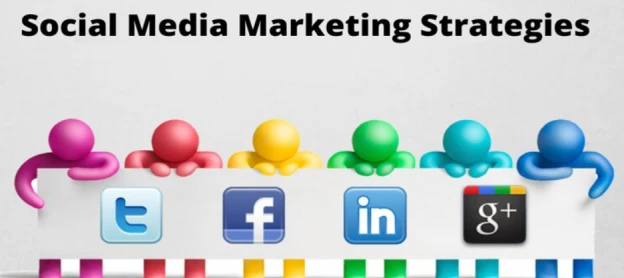
Developing an SMM Strategy: Examples, Templates, and Goals for Successful Promotion
In the face of growing competition on social media, it's important for brands to have a clearly structured SMM strategy. It serves as the foundation for all company actions on social networks, helping to define goals, target audience, content, and promotion approaches.
Why do you need an SMM strategy? It allows you to effectively build communication with your audience, increase brand awareness and user engagement, and boost conversion. Without a clearly defined strategy, any social media activity can become unsystematic and ineffective.
The main goals of an SMM strategy include:
- increasing brand awareness;
- boosting audience engagement;
- attracting new customers;
- growing sales and strengthening brand loyalty.
Please note: promoting business on social media without working accounts is difficult. Getting them in a few clicks using affordable virtual numbers for VK, OK, Dzen, X social network, or FB from Grizzly SMS service is the most productive option for a successful SMM specialist.
Elements of SMM Promotion Strategy: Key Aspects

To create a successful SMM promotion strategy, several key components must be considered.
All strategy elements help build a logical process of working with the audience and achieving set goals:
- Goal setting. Setting goals helps understand what the brand is striving for. This could be growing follower count, increasing sales, or improving content engagement. For example, an SMM strategy goal for small businesses might include increasing brand awareness at the local level;
- Target audience analysis. Determining the interests, needs, and habits of the target audience is important for developing effective content and more precise targeting;
- Competitor analysis. Understanding competitors' strategies helps identify their strengths and weaknesses and use this to your advantage. Developing an SMM strategy must include this analysis for creating unique positioning;
- Content strategy development. Content is one of the main ways to interact with the audience. Content strategy involves planning materials that will be interesting and useful to users;
- Choosing promotion channels. Different social platforms offer various opportunities to reach the target audience, whether it's Instagram, Facebook, Twitter, or LinkedIn;
- Publication planning. Regular posting helps maintain audience interest. Creating a content plan facilitates this process and allows monitoring publication dynamics;
- Results analysis. Evaluating SMM strategy effectiveness helps adjust actions based on statistics and improve results in the future.
Each of these stages contributes to the overall goal, and their comprehensive use allows creating a holistic and effective brand SMM strategy.
Examples of Brand SMM Strategy

Examples of successful strategies can inspire and guide companies in the right direction.
Let's look at several popular strategies that companies use to attract audiences:
- for B2C companies. The B2C sector actively uses visual platforms like Instagram and TikTok, where the emphasis is on content that evokes emotional responses from users. For example, an Instagram SMM strategy might include publishing user-generated content, stories with product usage recommendations, video reviews, and live streams;
- for B2B companies. Companies operating in the B2B sector most often choose LinkedIn to interact with potential clients and partners, promoting expert content and strengthening business reputation. Key elements of B2B strategies include publishing research, professional advice, and client case studies.
For small companies, creating an SMM strategy might focus on minimizing expenses and using organic content to attract local audiences. For example, through short product video reviews or posts with surveys, small businesses can attract attention without significant costs.
Template for Creating an SMM Strategy

For those who want to simplify the process of developing an SMM strategy, a template can serve as a useful guide.
Let's examine step by step how to create a strategy considering all necessary aspects:
- Define strategy goals based on company and competitor analysis;
- Identify the target audience and segment it by interests, age, and geography;
- Conduct competitor analysis to understand their strengths and weaknesses;
- Create a content strategy that will reflect company values and audience interests;
- Determine suitable platforms for promotion based on target audience specifics;
- Create a content plan covering at least one month of publications with clear themes and schedule;
- Evaluate work effectiveness by conducting regular analysis and strategy adjustment based on obtained data.
This template serves as a step-by-step instruction that helps define main directions and focus on achieving SMM strategy goals.
Useful Tools for Developing an SMM Strategy

Various tools are used to create effective strategies and analyze data, allowing work optimization, automation of routine processes, and content effectiveness monitoring.
The main tools for creating a brand SMM strategy include:
- content planning platforms. Hootsuite, Buffer, and Sprout Social help automate post publishing, maintaining regularity and freeing up time for other tasks;
- visual content creation tools. Canva and Adobe Spark offer ready-made templates that help create quality images and animations for publications;
- analytical services. Google Analytics and Facebook Insights allow tracking engagement and conversion statistics, helping identify content strengths and weaknesses;
- chatbots. ManyChat and Chatfuel allow automation of audience interaction, facilitating issue resolution and increasing engagement.
These tools significantly simplify the development of SMM work strategy and allow quick action adjustments based on results.
Examples of Effective Content Strategies in SMM

Among the key aspects to consider when developing a content strategy in SMM, variety of formats, publication frequency, and alignment with target audience needs are important. It's also crucial to consider the specifics of each social platform, adapting content to user expectations.
Here’s what to focus on:
- user-generated content publications. Engaging audiences through user-generated content creates an atmosphere of trust and strengthens loyalty. For example, customer reviews, product photos, and stories from real buyers can become excellent material for publications.
- educational content. Posts with educational information help users understand how to better use the product or how it can improve their lives.
- themed contests and polls. Contests and polls stimulate engagement and allow collecting useful data about audience preferences.
- videos and live streams. Video content, especially in live stream format, promotes closer interaction with followers and allows instant response to their questions.
Creating an smm-strategy requires consideration of all these formats to best reach the audience and maintain their attention.

































































































































































































































